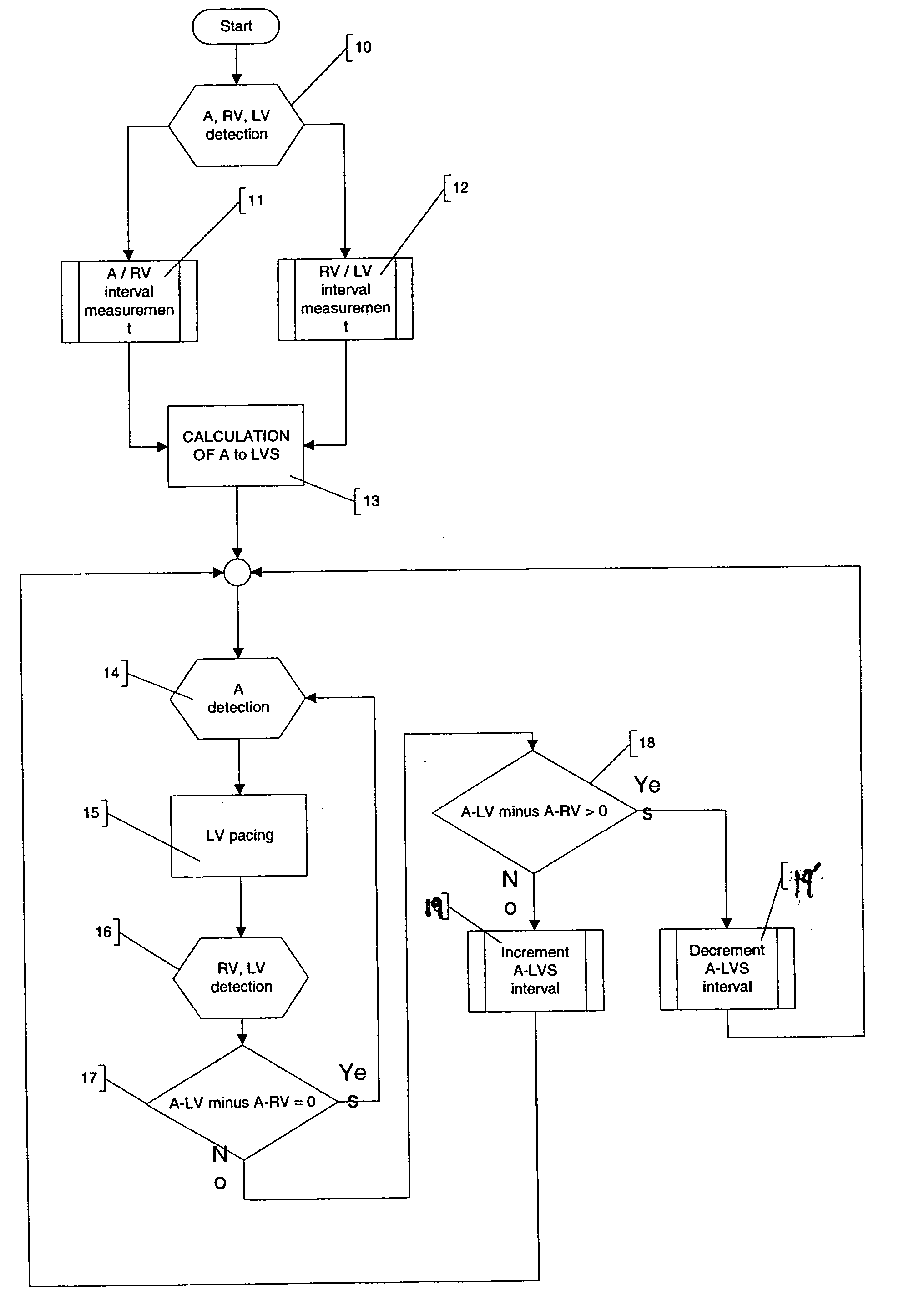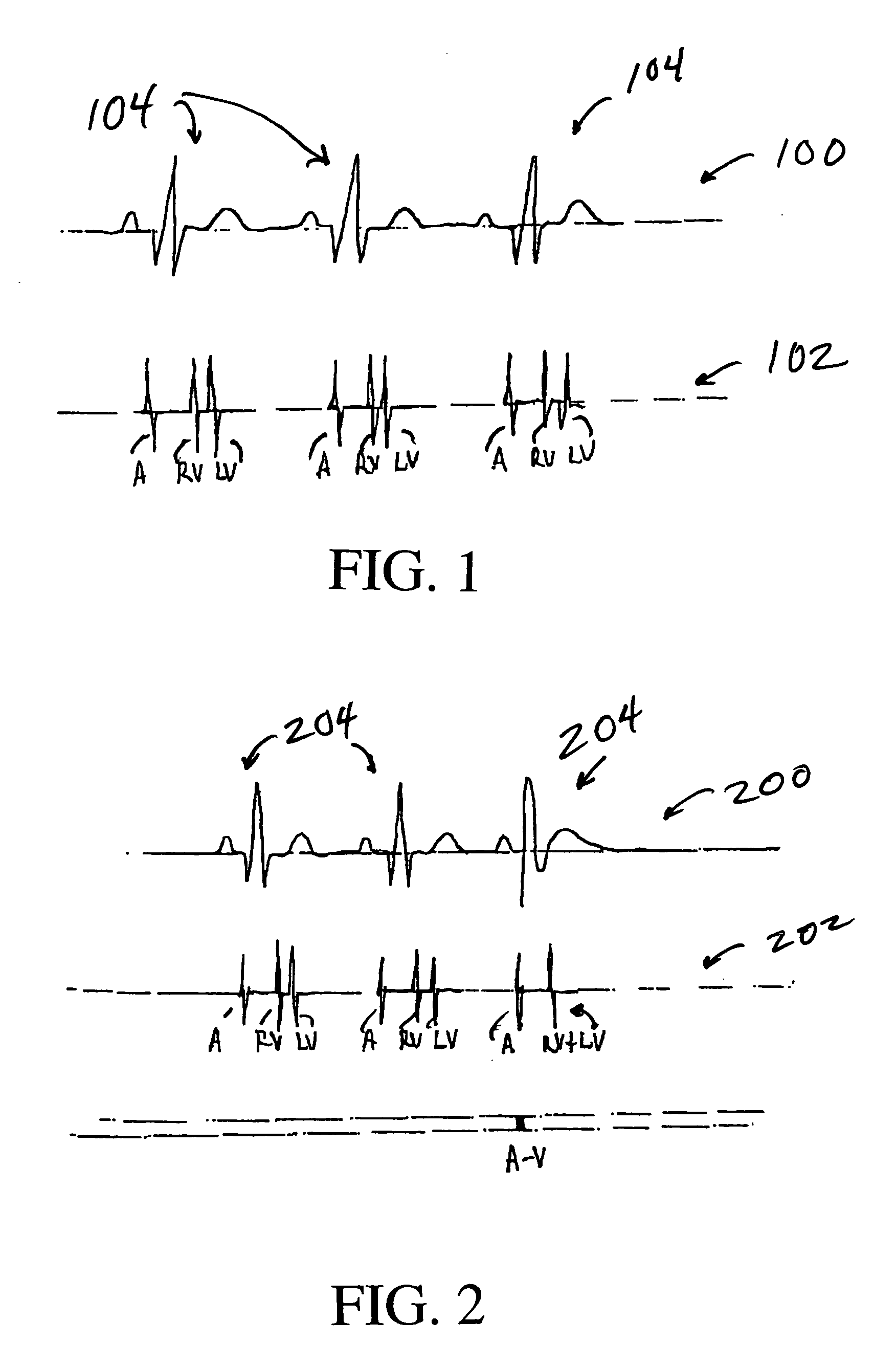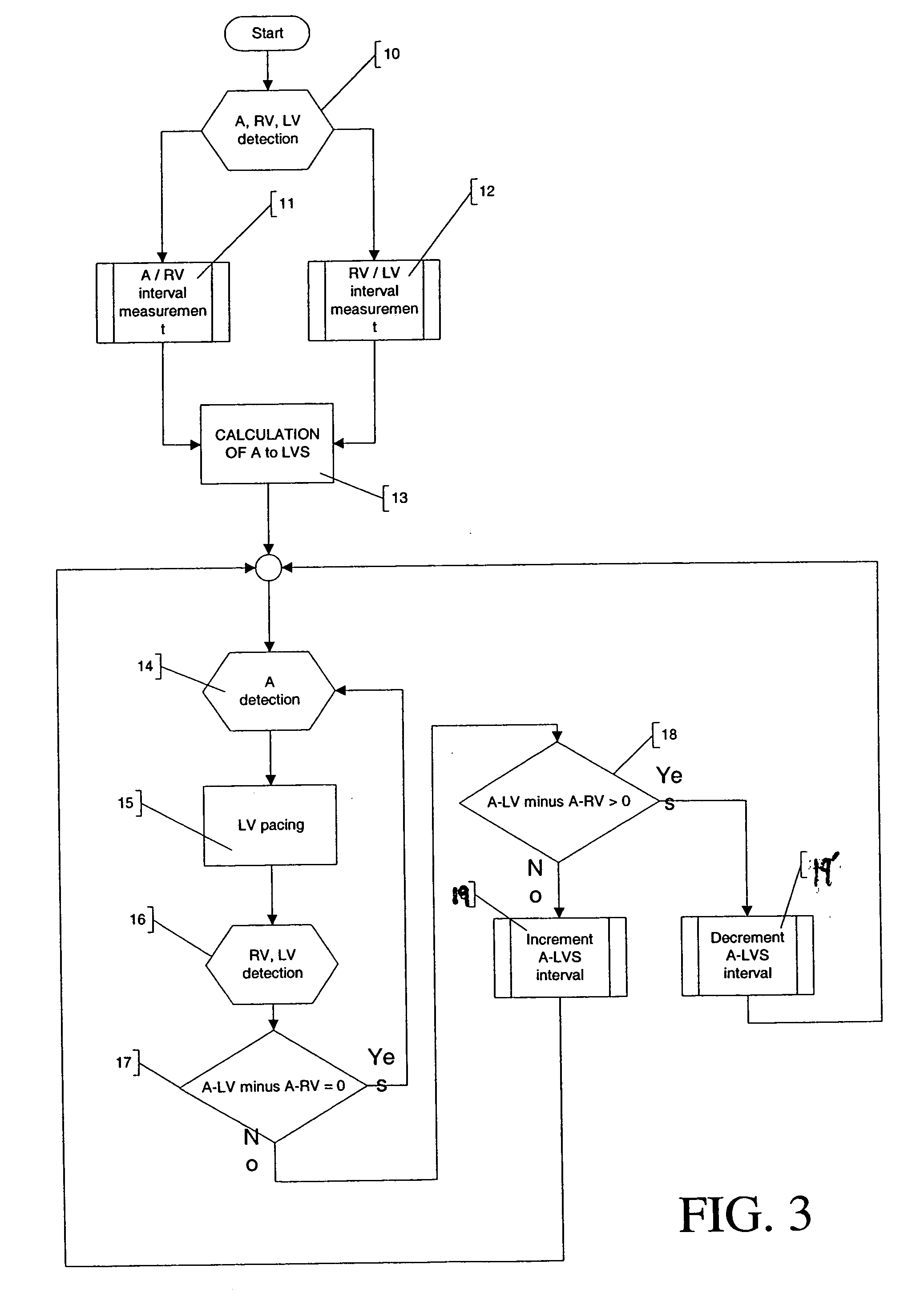Mechanical sensing system for cardiac pacing and/or for cardiac resynchronization therapy
a sensing system and mechanical technology, applied in the field of mechanical sensing system for cardiac pacing and/or cardiac resynchronization therapy, can solve the problems of impeded accuracy, specificity and sensitivity of output signals, inherently out of phase with the actual evoked or intrinsic mechanical activity of the heart, so as to achieve optimal sensing of cardiac activity
- Summary
- Abstract
- Description
- Claims
- Application Information
AI Technical Summary
Benefits of technology
Problems solved by technology
Method used
Image
Examples
Embodiment Construction
[0024] According to the present invention, a system and methods of delivering cardiac resynchronization therapy (CRT) and other pacing therapies is provided wherein a mechanical sensor signal, free of blanking intervals typically imposed on electrical cardiac sensing circuitry, is used to rapidly and accurately tune atrio-ventricular (A-V) and / or interventricular (V-V) cardiac pacing intervals. In addition, the apparatus can be employed to distinguish between capture and loss of capture (LOC) of one or more cardiac chambers during pacing therapy delivery.
[0025] In one embodiment, the system includes a tensiometric sensor (coupled to a cardiac pacing lead or a stylet) or an accelerometer sensor mechanically coupled to both the RV and the LV (e.g., disposed in a portion of the coronary sinus, great vein or branches of the great vein). In another embodiment, the system comprises only tensiometric stylet within the coronary sinus, great vein or branches of the great vein.
[0026] In oth...
PUM
 Login to View More
Login to View More Abstract
Description
Claims
Application Information
 Login to View More
Login to View More - R&D
- Intellectual Property
- Life Sciences
- Materials
- Tech Scout
- Unparalleled Data Quality
- Higher Quality Content
- 60% Fewer Hallucinations
Browse by: Latest US Patents, China's latest patents, Technical Efficacy Thesaurus, Application Domain, Technology Topic, Popular Technical Reports.
© 2025 PatSnap. All rights reserved.Legal|Privacy policy|Modern Slavery Act Transparency Statement|Sitemap|About US| Contact US: help@patsnap.com



